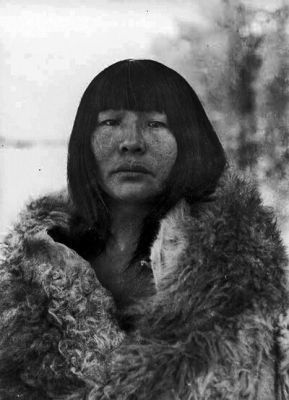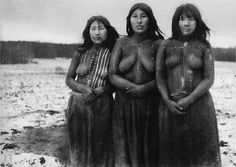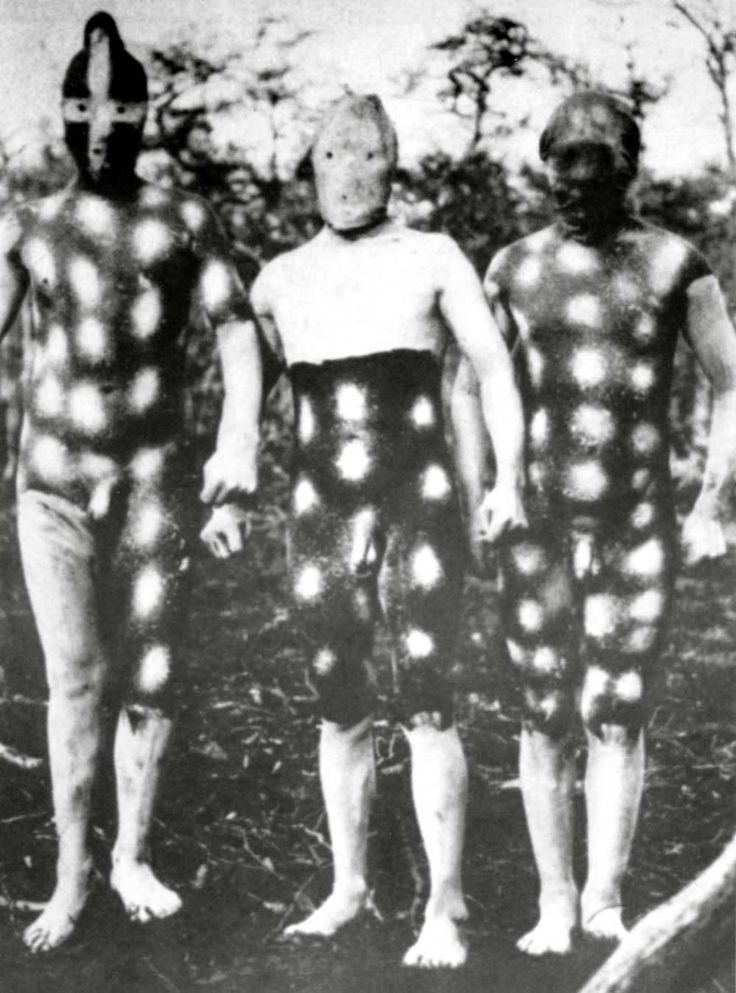Haz clic aquÍ para leer en español
Content Note: Nudity
The Selk’nam, or Ona, were the original inhabitants of Tierra del Fuego. Their relationship to nature and the rough elements in which they survived, year after year, gave rise to a language which modern words do not capture. Each telling is slightly different, with implications and messages.
For example, one woman explains, “their word for wind is no like ours, something that comes and passes, the wind was always there.” Wind from each of the cardinal directions had traits and personalities all their own.
I’ve come across several anthologies which do a better job of capturing their mythology, but here will share one I have heard several times over. Each time it is a bit different so this telling is true only to my own understanding and interpretation.
The story of the Sun and Moon, as with many others, links elements to the genders. They tell of a balance of power; between the moon and sun as between women and men. For a more complete introduction their mythology and relationship to the elements, Anne MacKaye offers an interesting online read.
 In the time before time, before the metamorphosis to the world as we know it today, when elements existed as Shamans and stars and mountains walked the earth, in the era of hoowin, women ruled the clans. The men were assigned menial tasks such as packing and carrying the heavy burdens between camps. They raised the children, gathered water, and cooked.
In the time before time, before the metamorphosis to the world as we know it today, when elements existed as Shamans and stars and mountains walked the earth, in the era of hoowin, women ruled the clans. The men were assigned menial tasks such as packing and carrying the heavy burdens between camps. They raised the children, gathered water, and cooked.
The leader of the women was Krah (or Kra), moon-woman, wife of Kreen (Kran), the sun. Regularly the clans would gather for the Hain ceremony, during which young people were initiated, the women to their roles and the men to theirs. During this time also the spirits would arise, dancing around the young women, inducting them to the new order. The men would hear them making terrible noises and were sometimes frightened by the beings.
 During the preparation for one Hain, three young men spied on the tent where the women were preparing. They discovered the “spirits” which appeared to torment them, were really just the older women painted and wearing masks.
During the preparation for one Hain, three young men spied on the tent where the women were preparing. They discovered the “spirits” which appeared to torment them, were really just the older women painted and wearing masks.
The young men gathered others together and vowed to take the upper hand, to punish the women who had fooled them. They chose not to punish the young, uninitiated women, focusing instead on those who conducted the ceremony. They surrounded the tent and attacked. Only five women escaped with their lives. One transformed into a white duck, another a swan, and a third into a black duck.

Krah, the moon-woman, paid most dearly. In his rage, her husband brandished a log from the fire, hitting her on the face once, twice, but was afraid to hit her a third time, lest he should kill her and the skies themselves cave in. In the moment of his hesitation, Krah fled into the heavens, never to return. Though Kreen pursues her across the skies, he never catches her. She carries the pock marks of the beating on her celestial face.
She is temperamental and appears at different times and places in the night sky, sometimes not at all. During eclipses, her rage for the attack shows, and she turns red and angry.
From then forward, the balance of power shifted from the women to the men. The women bore the brunt of the menial work, and during the ceremonies it was the men wore the costumes and paints.
La hora del cuento: el sol y la luna
Traducción por Henry Tovar
Nota del contenido: desnudos.
Los Selk´nam, o Ona, fueron los primeros habitantes de tierra del fuego. Su relación con la naturaleza y los elementos ásperos en los que sobrevivieron, año tras año, dio lugar un lenguaje que las palabras modernas no captan. Cada dicho es ligeramente diferente, con implicaciones y mensajes.
Por ejemplo, una mujer explica, ´´la palabra de ellos para el viento no es el nuestro, como algo que viene y pasa, el siempre ha estado allí´´. El viento de cada una de las direcciones cardinales tienen rasgos y personalidades que son propias. Me he encontrado con varias antologías, que hacen un mejor trabajo en la captura de su mitología, pero aqui voy a compartir uno que he escuchado varias veces. Cada vez es un poco diferente por lo que este relato es cierto sólo a mi propia comprensión e interpretación.
La historia del Sol y la Luna, al igual que con muchos otros, vincula a los elementos de géneros. Ellos hablan de un equilibrio de poder, entre la luna y el sol como entre hombres y mujeres. Para una introducción más completa de su mitología y su relación con los elementos, Anne Mackaye ofrece una lectura en líne interesante.
 En el tiempo antes del tiempo, antes de la metamorfosis en el mundo como lo conocemos hoy en día, cuando existian elementos como chamanes, las estrellas y las montañas caminaron en la tierra, en la era de hoowin, las mujeres gobernaban los clanes. Los hombres eran asignados a las tareas domesticas tales como el embalaje, llevar las cargas pesadas entre los campos, la crianza de los hijos, recolectar agua y cocinar.
En el tiempo antes del tiempo, antes de la metamorfosis en el mundo como lo conocemos hoy en día, cuando existian elementos como chamanes, las estrellas y las montañas caminaron en la tierra, en la era de hoowin, las mujeres gobernaban los clanes. Los hombres eran asignados a las tareas domesticas tales como el embalaje, llevar las cargas pesadas entre los campos, la crianza de los hijos, recolectar agua y cocinar.
La líder de las mujeres era Krah (o Kra), la mujer-luna, esposa de Kreen (kran), el sol. Regularmente los clanes se reunían para la ceremonia Hain, durante la cual la gente jovén es iniciada, las mujeres a sus papeles y los hombres a los suyos. Durante ese tiempo surgirían también los espiritus, bailando alrededor de las mujeres jóvenes, induciendo a la nueva orden. Lo hombres las escuchan haciendo ruidos terribles y a veces asustados por estos seres.
 Durante la preparación para una Hain. Tres jóvenes espiaron la tienda donde las mujeres se estaban preparando. Descubrieron los ´´espiritus´´, que aparecieron atormentarlos, eran realmente sólo las mujeres de edad más avanzada y con mascaras pintadas.
Durante la preparación para una Hain. Tres jóvenes espiaron la tienda donde las mujeres se estaban preparando. Descubrieron los ´´espiritus´´, que aparecieron atormentarlos, eran realmente sólo las mujeres de edad más avanzada y con mascaras pintadas.
Los jóvenes se reunieron con los demás y juntos se conmprometieron a tomar la sartén por el mango para castigar a las mujeres que los habian engañado. Ellos optaron por no castigar a las mujeres jóvenes y los iniciados, centrándose en cambio en los que llevó a cabo la ceremonia. Rodearon la tienda y atacaron. Sólo cinco mujeres escaparon con sus vidas. Una transformada en un pato blanco, otras en cisnes y una tercera en pato negro.

Krah, la mujer-luna pagó más caro. En su rabia, su marido blandió un registro del fuego, golpeándola en la cara una vez, dos veces, pero tenía miedo de pegarle una tercera vez, para no matarla y que los cielos se cayeran. En el momento de su vacilación, Krah huyó a los cielos, para no volver jamás. Aunque Kreen la persigió por el cielo, nunca la alcanzó. Ella lleva marcas de viruela de los golpes en su rostro celeste.
Ella es temperamental y aparece en diferentes momentos y lugares en el cielo de la noche, a veces no del todo. Durante los eclipses, mustra su rabia por el ataque, y se vuelve roja y enojada.
A partir de entonces, el equilibrio del poder se desplazó de las mujeres a los hombres, las mujeres fueron las mas afectadas de los trabajos de baja categoria, y durante las ceremonias eran los hombres quienes llevaban los trajes y la pintura.





